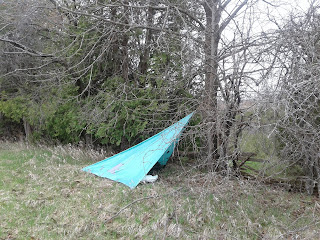I'm not a rich man, thus I can only afford a few new pieces of gear a year.
Since a pot is cheaper and more useful than a water filter that is what I have always used to disinfect my water. However there are several other methods of water disinfection you can use, the
CDC provides some excellent resources.
As you may know, boiling your water in order to disinfect it is a foolproof method, guaranteed to work every time; unless your at an altitude that does not permit the sufficient heating of water necessary for disinfection (CDC, 2019).
So boiling works, and it's cost effective. However, it does have drawbacks. I've found that I'm never sufficiently hydrated when using the boiling method, especially in hot weather. When you combine the time required to boil and cool water with the fact that warm scuzzy water is unappetizing, voilà your on your way to dehydration.
Well, this year I decided it was time to invest in a water filter. I have been watching the market for many years waiting for a good product to emerge, and guess what this year I found one. The
Sawyer MINI. This filter is very versatile, and good value. I don't often recommend products, but this one defiantly gets my seal of approval. The Sawyer MINI can be used inline with hydration packs, used in a gravity flow system, used as a life straw, and attaches to most PET bottles and hydration bags.
True a filter does not guarantee disinfection like boiling, but the Sawyer is a 0.1 Micron filter, which is one of the smallest pore sizes available today. 0.1 Micron prevents harmful bacteria (like salmonella or leptospirosis), protozoa, or cysts like E. coli, Giardia, Vibrio cholerae, and Salmonella typhi to pass through the filter (Sawyer, 2019).
Warning
Never allow your water filter to freeze. The expanding ice crystals will break the filter media, thus rendering your filter ineffective. If temps are below freezing keep the filter in your pocket, and with you while sleeping at night.
If you want more information about water treatment and potential risk here is an excellent article,
Water Disinfection for International and Wilderness Travelers
References
A Guide to Drinking Water Treatment and Sanitation for Backcountry and Travel Use | Camping, Hiking, Travel | Drinking Water | Healthy Water | CDC. Retrieved May 14, 2019, from https://www.cdc.gov/healthywater/drinking/travel/backcountry_water_treatment.html
Backer, H. (2008). Water Disinfection for International Travelers. Travel Medicine,47-58. Retrieved May 14, 2019.
Sawyer | Water Filtration, Insect Repellent, Sunscreens and More. Retrieved May 14, 2019, from www.sawyer.com
A Guide to Drinking Water Treatment and Sanitation for Backcountry and Travel Use | Camping, Hiking, Travel | Drinking Water | Healthy Water | CDC. (n.d.). Retrieved May 14, 2019, from https://www.cdc.gov/healthywater/drinking/travel/backcountry_water_treatment.html
Backer, H. (2008). Water Disinfection for International Travelers. Travel Medicine,47-58. Retrieved May 14, 2019.
Sawyer | Water Filtration, Insect Repellent, Sunscreens and More. (n.d.). Retrieved May 14, 2019, from www.sawyer.com
A Guide to Drinking Water Treatment and Sanitation for Backcountry and Travel Use | Camping, Hiking, Travel | Drinking Water | Healthy Water | CDC. (n.d.). Retrieved May 14, 2019, from https://www.cdc.gov/healthywater/drinking/travel/backcountry_water_treatment.html
Backer, H. (2008). Water Disinfection for International Travelers. Travel Medicine,47-58. Retrieved May 14, 2019.
Sawyer | Water Filtration, Insect Repellent, Sunscreens and More. (n.d.). Retrieved May 14, 2019, from www.sawyer.com
A Guide to Drinking Water Treatment and Sanitation for Backcountry and Travel Use | Camping, Hiking, Travel | Drinking Water | Healthy Water | CDC. (n.d.). Retrieved May 14, 2019, from https://www.cdc.gov/healthywater/drinking/travel/backcountry_water_treatment.html
Backer, H. (2008). Water Disinfection for International Travelers. Travel Medicine,47-58. Retrieved May 14, 2019.
Sawyer | Water Filtration, Insect Repellent, Sunscreens and More. (n.d.). Retrieved May 14, 2019, from www.sawyer.com


























